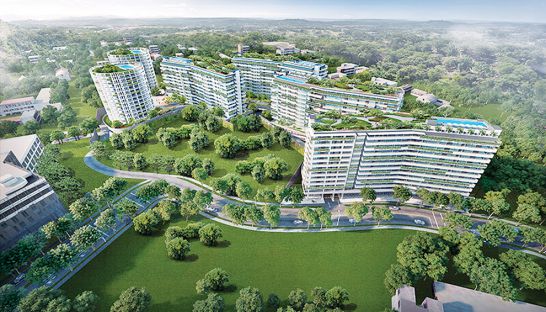Oversupplied boreys can ride out bumps better than condos
Oversupplied boreys can ride out bumps better than condos
Talk of condominium oversupply has been dominating the real estate industry in Phnom Penh, but the glut has now spilled over to other types of housing within the capital.

Market experts and surveyors have been closely following the fluctuating trends of residential property uptakes, and outlined the key differences between the already established condo oversupply and, now, the borey oversupply.
A report published by property evaluation firm VTrust Appraisal last month confirmed the state of a borey oversupply, with roughly 33,000 units left unsold at the end of 2016. However, this is not deterring developers, with around 28,000 units set to be added to existing stock this year.
According to Hoem Seiha, director of research at VTrust Appraisal, there isn’t a pressing need to be overly concerned with this excess.
“This [oversupply] will ease by the next couple of years due to the strong demand among the middle to upper-middle class. The remaining units will be taken out of the market in the next couple of years, given the current market absorption.”
While there is still no official data on income brackets classifying the different income classes in the country, Seiha said the latest informal census conducted in 2014 yielded an average of $580 for disposable monthly income in households. Even that, however, is unreliable as “the income level in Cambodia is uneven with a considerably large gap.”Based on a small-scale consumer survey VTrust conducted in that same year, it was found that the highest percentage of local white-collar workers – six percent – earned between $1,000 and $2,000 a month, while about 93 percent brought home monthly incomes of less than $1,000.
Breaking this down, Seiha said, “On average, their back-end housing affordability is 45 percent – meaning they will spend 45 percent of their gross monthly income for an average house costing about $45,000, given a mortgage term of 20 years, a down payment of $5,000, an interest rate of 8.5 percent per year, and $40,000 worth in mortgage.”
However, Cambodians are more familiar with the concept of landed houses, also referred to as boreys.
When compared to condos, borey houses have a more favourable outlook.
In the short term, Seiha said condos will pose more of an economic risk to the sector among speculative buyers expecting substantial returns. “Take-up rate slows, secondary market demand lags, rents achieve few tenants – all these pose risks in the short term.”
James Hodge, surveyor for CBRE Cambodia, believes the structure of borey developments allows developers to be more privy to changes in supply and demand than is the case in other markets, including the condo sector, noting that the borey market is heavily reliant on home-grown demand.“Borey developers have accelerated their building programs as a result of these favourable conditions and it will take time for demand to expand to the same volume as the supply pipeline,” he said.
He added, “This is because demand is primarily driven by domestic purchasers, and as such, it largely has to grow in an organic manner alongside rising wages and living standards.”
An important matter to note when examining condos and boreys is that boreys can be more responsive to market shifts because the developer can pause construction more easily. This comes as a result of the units within the borey complex having been developed on a standalone basis, said Hodge. “In contrast, a tower block [in condos] must be fully completed before the project can function properly.”
While the condo market is largely driven by investor demand, it is more exposed to international economic risks, but that also means it has greater potential to survive domestic issues as long as the global economy continues showing sustained growth, Hodge explained.
He highlighted that currently, developers in both the condo and borey markets are making a conscious shift in targeting their products away from the high-end towards the affordable category. “Although the affordable model typically offers lower profit margins, the broader customer base is attractive when needing to dispose of a large number of units.”
Like Seiha, Hodge opined that the greatest risk to market confidence was occupation levels in condos which would have adverse effects on rents and secondary market values.
“The model of condo sales to external investors and wealthy domestic purchasers appears to have been largely driven by equity as opposed to debt, whereas borey sales show greater links with lending from domestic banks,” he said, adding that many borey developers were willing to ride out any bumps in the market.
Opinions among the working middle-class differ, however. Phnom Penh resident, 27-year-old So Phea, would prefer living in a condo largely due to its aesthetic and safety features. On the other hand, Pou Neang, 31, said he would choose to live in a shophouse or borey unit that’s on ground. “It is not yet a trend to live in a condo,” he said.
VTrust’s Seiha added, “It needs another five years for some young locals to learn to adopt condo lifestyles, and it needs about 10 years for Phnom Penh's population to widely accept the notion of condo lifestyles.”
“A major difference between the two markets is end-occupier demand, which borey developments have largely conquered due to the trend for long-term occupation by family units,” Hodge concluded.













